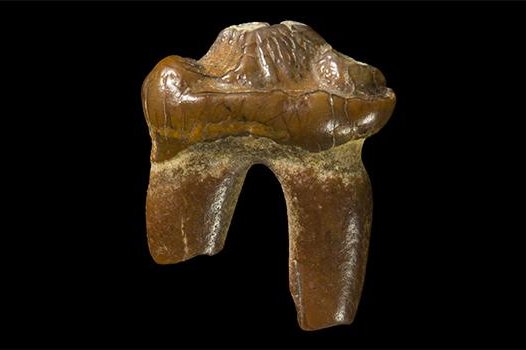A 3-million-year-old tooth found on an Australia beach is just the second earless seal fossil found on the island continent. Photo by Monash University
April 6 (UPI) -- The seals and sea lions that today populate Australia's shores and coastal waters were preceded by earless seals, part of a now-extinct group of sea mammals known as monachines.
Scientists identified a 3-million-year-old tooth, found on a beach in the state of Victoria, as belonging to an ancient earless seal species. The tooth is only the second earless seal fossil found on the island continent.
Thanks to the discovery, described in the Journal of Vertebrate Paleontology, scientists are gaining a better understanding of the evolutionary history and geographic distribution of Australia's lost earless seals.
The research could also help scientists figure out why the seals went extinct.
"This tooth, roughly three million years old, tells a story similar to what occurred in South Africa and South America in the past," lead researcher James Rule, doctoral candidate at Monash University in Australia, said in a news release. "Earless monachine seals used to dominate southern beaches and waters, and then suddenly disappeared, with eared seals replacing them. Since seal fossils are rare globally, this discovery makes a vital contribution to our understanding of this iconic group of sea mammals."
The ancient tooth fossil was discovered by an amateur fossil hunter several years ago, but only recently donated to curators at Museums Victoria. Paleontologists compared the fossil to the teeth of other pinnipeds, including earless seals, fur seals, sea lions and the walrus. The ancient tooth's characteristics matched those of earless seal teeth -- characteristics that offer clues as to how the ancient earless seal lived and hunted.
"This seal lived in shallow waters close to the shore, likely hunting fish and squid," Rule said. "As monachines cannot use their limbs to walk on land, it would have required flat, sandy beaches when it came ashore to rest."
Scientists suspect Australia's earless seal populations began to decline as climate change triggered sea levels rise, eliminating access to Australia's beaches. It's a fate that could await modern seals, should humans fail to curb climate change and slow sea level rise.
"These changes in the past have led to the extinction of Australia's ancient earless seals," said study co-author David Hocking, a research fellow in Monash University's School of Biological Sciences. "Our living fur seals and sea lions will likely face similar challenges as the Earth continues to warm, with melting polar ice leading to rising sea levels. Over time, this may lead to the eventual loss of islands that these species currently rely upon to rest and raise their young."















